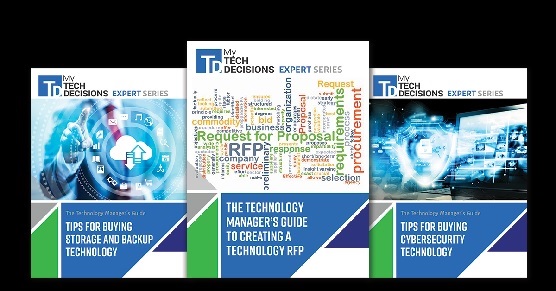Editor’s Note: Another version of this article originally appeared on our sister-site Commercial Integrator on October 17, 2023. It has since been updated for My TechDecisions’ audience.
Artificial Intelligence (AI) is quickly becoming a mainstay in our everyday lives. Whether it be text-to-image generators like DALL-E or language processing tools like ChatGPT, sophisticated AI tools are revolutionizing the way we work.
That’s especially true in the hybrid workplace, where organizations are searching for new ways to bridge the gap between distributed employees. Given this challenge, it’s no wonder that videoconferencing has emerged as AI’s next step in revolutionizing how we live and work.
Let’s explore AI’s role in videoconferencing and how its latest innovations are improving the meeting experience.
The Rise of AI-Powered Videoconferencing
It should come as no surprise that demand for videoconferencing apps has grown exponentially since the start of the pandemic in spring 2020. Without question, virtual meetings are the bedrock of hybrid work, enabling organizations to seamlessly connect and collaborate across a distributed workforce.
This uptick in demand runs parallel with the emergence of several new competitors in the videoconferencing market. In turn, vendors have been compelled to improve their services by releasing feature-rich additions to their existing applications.
AI technologies have also advanced in leaps and bounds over the same period. In fact, reports show that AI adoption is 2.5 times greater now than it was in 2017. The market is projected to skyrocket twentyfold by 2030 to nearly $2 trillion.
Now, the two worlds are converging. Leading platforms are weaving AI capabilities into their videoconferencing tools to enhance the meeting experience for maximum productivity and performance.
Four Ways AI Can Transform the Videoconferencing Experience
Gone are the days when organizing, running and managing your virtual meetings was a clunky, cumbersome endeavor. Thanks to AI’s advantages, videoconferencing platforms are empowering organizations to kick up their internal and external meetings several notches.
Here are four of the most impactful ways AI-driven solutions can improve the meeting experience.
#1 Natural Language Processing (NLP)
Natural language processing is a branch of AI that enables computers to understand text and spoken words in the same way a real person can. In other words, it’s about giving AI programs the power of conversational intelligence.
Modern videoconferencing tools are leveraging NLP across a host of innovative capabilities, including:
- Voice-to-text transcription: Using NLP, an AI-enabled platform can recognize and process complete sentences as they’re spoken during the meeting. This allows the system to automatically capture meeting notes, summarize conversations and generate searchable transcripts. When machine learning tools are incorporated, videoconferencing platforms can even identify who is speaking during the meeting.
- Real-time translation: Global enterprises may be holding internal or external meetings that stretch beyond borders and include attendees who speak different languages. With AI, the meeting software can give everyone an equitable experience by automatically translating live audio into the language of any user’s choice.
- Closed captions: Likewise, NLP capabilities can analyze audio and generate closed captions to make the meeting experience more inclusive for all participants.
- Noise removal: From cars and pets to housemates and more, there’s no telling what sounds might suddenly disrupt and derail a meeting. Machine learning can be used to train AI to identify and remove those noises before they’re picked up. For hybrid teams, this is especially useful, as automatic background noise removal and acoustic fencing filters out distractions in different locations to keep meetings running smoothly.
- Sentiment analysis: Consider the customer experience use case for videoconferencing: contact center agents working on resolutions in real-time. One major benefit for agents is AI’s ability to understand sentiment and tone during a conversation. Programs can analyze a speaker’s voice to uncover pain points and frustrations during the interaction. This allows managers to evaluate both customer experience and agent performance for future improvements.
#2 Conversational AI
Although they’re also built on NLP, conversational AI programs stand on their own. In simple terms, conversational AI refers to platforms that can chat and interact with users. That said, their capabilities stretch far beyond simple back-and-forth communication.
For example, voice-based virtual assistants can be used to streamline meeting management. Users can simply speak to their endpoints and apps to kickstart a meeting, turn on their camera, capture important items and control the experience from start to finish.
Chatbots can also be asked to schedule follow-up meetings with attendees, assign action items, send automated reminders and more.
#3 Computer Vision (CV)
According to Aragon Research, computer vision will have the biggest impact on intelligent videoconferencing in the future. This type of AI uses algorithms to understand, analyze and reconstruct visual inputs from image or video data.
This has several innovative use cases for meetings:
- Optimized framing: CV can help participants stay in their cameras’ frame when presenting to colleagues and customers. By automatically tracking the speaker’s movements, the system keeps you centered in your video to eliminate unwanted distractions. In addition, multiple cameras in a room can now work together by switching cameras views to focus on the active speaker. The result? A cinematic video experience that follows the conversation from one speaker to the next.
- Adaptive tracking: For meetings with multiple speakers, CV programs can ensure everyone is equally represented on screen. During webinars, cameras can adaptively track speakers as they move across the room or auditorium stage, ensuring that they’re always in everyone’s view.
- Immersive presentations: Virtual presentations are challenging in hybrid settings. CV allows presenters to deliver more immersive content by automatically screen sharing in front of presentation materials.
- Meeting zones: AI will soon use machine learning to automatically learn and frame your space based on predefined boundaries. This will ensure that distraction from passers-by are removed from the meeting in glass-walled rooms or open space.
#4 Productivity Analytics
People spend a lot of time in meetings these days. So, it’s important for organizations to ensure that time is well spent on value-added activities and core business processes. Fortunately, AI-powered solutions are helping businesses capture meeting data and leverage it to their advantage.
AI enhances data collection and offers users the power to evaluate key metrics. For example, platforms can record time spent on certain agenda items and activities, back-to-back meetings and other real-time insights that can be delivered directly to employees to help improve their productivity.
The Future of AI-Driven Videoconferencing
In truth, we are only scratching the surface when it comes to what AI can bring to the table. But, with the videoconferencing market expected to double by 2030, it’s safe to say that AI-powered meetings will be a major asset for years to come.
Robyn Rawlings is director of campaigns and content marketing at Webex by Cisco.
If you enjoyed this article and want to receive more valuable industry content like this, click here to sign up for our digital newsletters!










Leave a Reply